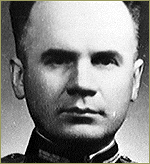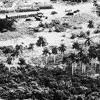







American Spies - Introduction
AMERICAN SPY - Oleg Penkovsky
A colonel in the GRU (Soviet military
intelligence) and one of the greatest Western
intelligence coups of the Cold War.
Penkovsky had grown disillusioned with the
Soviet system and feared Premier Nikita
Khrushchev would lead his country to
 nuclear war, so he volunteered his services
to British and American intelligence. He was
trained in the use of the Minox camera and
from 1961 to 1962 photographed crucial
secret documents on Soviet missiles and
military capability and passed them to the
West. Some of these documents helped the
United States identify the Soviet missile
buildup in Cuba.
nuclear war, so he volunteered his services
to British and American intelligence. He was
trained in the use of the Minox camera and
from 1961 to 1962 photographed crucial
secret documents on Soviet missiles and
military capability and passed them to the
West. Some of these documents helped the
United States identify the Soviet missile
buildup in Cuba.
 In Russia, Colonel Oleg Vladimirovich Penkovsky, executed in Moscow 38 years ago, was regarded as a traitor. In the West he was
hailed as "the spy who saved the world". Now new evidence emerging from the old KGB suggests that Penkovsky need not have died at
all--he was betrayed by his friends, the British Secret Intelligence Service.
In Russia, Colonel Oleg Vladimirovich Penkovsky, executed in Moscow 38 years ago, was regarded as a traitor. In the West he was
hailed as "the spy who saved the world". Now new evidence emerging from the old KGB suggests that Penkovsky need not have died at
all--he was betrayed by his friends, the British Secret Intelligence Service.
It began on the night of August 12, 1960 when two young American tourists, strolling back to their hotel in Moscow, were approached
by a well-dressed Russian who said he had valuable information he wanted them to pass on to the American embassy.
Gary Powers, the American U-2 spy plane pilot, shot down over the Soviet Union the previous May, was to go on trial in Moscow in
four days' time. The Russian said he could expose the Soviet version of the incident as a lie: the U-2 had not been brilliantly brought
 down by a single missile, as the Soviet leader Khrushchev had claimed, but by 14, not one of which had been able to score a direct hit.
down by a single missile, as the Soviet leader Khrushchev had claimed, but by 14, not one of which had been able to score a direct hit.
The Americans were impressed by the Russian's apparent sincerity. They accepted an envelope the Russian pressed on them
and took it to the American embassy, where, after some bureaucratic difficulty, it was accepted and passed by diplomatic bag to the CIA
in Washington.
 The letter was from Oleg Penkovsky, a colonel in the GRU (Soviet military intelligence) and it offered his services to the West as a spy:
The letter was from Oleg Penkovsky, a colonel in the GRU (Soviet military intelligence) and it offered his services to the West as a spy:
I wish to pass materials to you immediately for study and analysis and subsequent utilisation . . .You will determine the manner of
transmittal of this material yourself. It is desirable that the transfer be effected not through personal contact but through a dead letter
drop.
The CIA was intrigued but suspicious. Penkovsky was not unknown to Western intelligence services. His war record, his marriage to a Russian general's daughter, and his
steady progress up the Soviet promotion ladder did not fit a defector's profile.
But by 1960 the atmosphere in Washington had changed. The Cold War had intensified and the CIA was hungry for information from a
live military source in Moscow.
Over the next two years Penkovsky photographed or stole top-secret documents, war plans, nuclear missile diagrams and military manuals.
He smuggled these to his American and British controllers by passing them to Western contacts.
 It was Soviet missile manuals provided by Penkovsky before the Cuban missile crisis that enabled the Americans to interpret their
photographs taken from the air over Cuba and to state categorically that the Soviets were installing missile launchers there. And, it was
It was Soviet missile manuals provided by Penkovsky before the Cuban missile crisis that enabled the Americans to interpret their
photographs taken from the air over Cuba and to state categorically that the Soviets were installing missile launchers there. And, it was
 Penkovsky's information that made the Americans realise that Khrushchev had greatly exaggerated Soviet missile capability.
Penkovsky's information that made the Americans realise that Khrushchev had greatly exaggerated Soviet missile capability.
Once KGB counter-intelligence had conclusive evidence of Penkovsky's treachery, it arrested him. Penkovsky went on trial in May 1963. He confessed everything and was sentenced to death.
Click here to go on to the more dangerous American Spies in the Cold War









Designed by Alec Andronikov and Baron Geluz











 In Russia, Colonel Oleg Vladimirovich Penkovsky, executed in Moscow 38 years ago, was regarded as a traitor. In the West he was
hailed as "the spy who saved the world". Now new evidence emerging from the old KGB suggests that Penkovsky need not have died at
all--he was betrayed by his friends, the British Secret Intelligence Service.
In Russia, Colonel Oleg Vladimirovich Penkovsky, executed in Moscow 38 years ago, was regarded as a traitor. In the West he was
hailed as "the spy who saved the world". Now new evidence emerging from the old KGB suggests that Penkovsky need not have died at
all--he was betrayed by his friends, the British Secret Intelligence Service.
 down by a single missile, as the Soviet leader Khrushchev had claimed, but by 14, not one of which had been able to score a direct hit.
down by a single missile, as the Soviet leader Khrushchev had claimed, but by 14, not one of which had been able to score a direct hit.
 The letter was from Oleg Penkovsky, a colonel in the GRU (Soviet military intelligence) and it offered his services to the West as a spy:
The letter was from Oleg Penkovsky, a colonel in the GRU (Soviet military intelligence) and it offered his services to the West as a spy:
 It was Soviet missile manuals provided by Penkovsky before the Cuban missile crisis that enabled the Americans to interpret their
photographs taken from the air over Cuba and to state categorically that the Soviets were installing missile launchers there. And, it was
It was Soviet missile manuals provided by Penkovsky before the Cuban missile crisis that enabled the Americans to interpret their
photographs taken from the air over Cuba and to state categorically that the Soviets were installing missile launchers there. And, it was
 Penkovsky's information that made the Americans realise that Khrushchev had greatly exaggerated Soviet missile capability.
Penkovsky's information that made the Americans realise that Khrushchev had greatly exaggerated Soviet missile capability.








